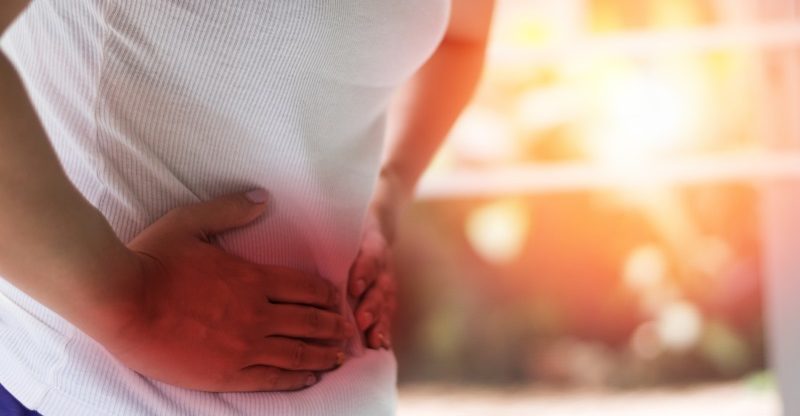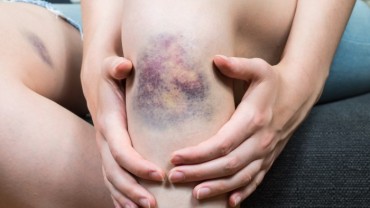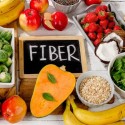7 Proven Natural Remedies for Diverticulitis
Diverticulitis is a painful and sometimes difficult-to-treat disease that affects hundreds of thousands of people each year in the United States.
This disease of the intestinal lining results in pain and inflammation that can even lead to a hospital stay.
Treating diverticulitis naturally helps you keep your colon healthy and strong and eliminates many unhealthy aspects of your diet and lifestyle.
This is also good for your overall health.
Our guide helps you understand diverticulitis, including what causes it and the associated risk factors.
We’ll then share the best natural remedies for treating this disease, including how to handle flare-ups that can throw your life off-track.
Understanding Diverticulitis
Unless you’ve had diverticulitis, you may have never even heard of this disease.
Knowing what it is, its causes and the risk factors that cause you to be more likely to develop it are essential for avoiding this inflammatory bowel condition.
Diverticulitis is a condition of the bowel that results in the development of bulges, sacs, and pouches in the lining of the colon, which is part of the large intestine.
These pouches become inflamed and painful because they represent structural weaknesses in the colon wall.
Bacteria, fecal matter and other harmful materials often find a home in these areas, making them a perfect place for disease to grow and spread.
If you have these bulges in your colon, you have diverticulosis.
However, when they become inflamed and infected, you have diverticulitis.
What causes these bulges to occur, and how can their formation be prevented?
Causes of Diverticulitis
Many things can aggravate or put pressure on the walls of your colon.
Being constipated is a common cause because straining places undue pressure on the walls and can result in the bulges and other malformations.
Irritation, whether from food or medications, can also create small tears or areas of inflammation along the lining, creating the diverticulosis.
Once areas of weakness are present, any infection or inflammation can cause problems and create symptoms.
The introduction of processed foods into the American diet has also resulted in an increased number of cases of diverticulitis.
Processed foods contain very little fiber, which is essential for colon health.
They may also contain ingredients that lead to inflammation and a weakening of the gut lining.
As you age, the lining of your intestine becomes weaker naturally.
Therefore, older people are more likely to develop diverticulitis.
Your risk of developing this disease is greatly increased when your diet is also low in fiber, when your intestinal microflora is not healthy, when you have food intolerances or sensitivities, or when you don’t get enough physical exercise.
Symptoms of Diverticulitis
How do I know if I have diverticulitis?
This disease is often accompanied by bloating, constipation and other changes in your regular bowel movements.
If you have consistent diarrhea, fever or chills, or have mild abdominal pain that worsens over time, you have diverticulitis.
Other symptoms include rectal bleeding, nausea, vomiting, sudden pain in the lower left abdomen, tenderness in your abdomen, or other digestive problems that last for more than a few days.
However, many people with this disease experience few to no symptoms.
It is often not until you have a serious infection or inflammation, that you start to notice there is a problem.
Less than one-quarter of people with diverticulitis need hospitalization, while most can be treated with simple dietary changes, as treatment of the offending infection.
In rare instances, people who have diverticulitis may develop complications, which can become serious.
The most common complications include:
- Perforation of the bowel, which are small tears in the lining of the colon, allowing food and waste into the bloodstream.
- Peritonitis, which is an infection in the bowel, which then leaks through perforations and into the lining of the abdomen.
- Abscesses, which are pus-filled lesions just outside the colon that cause severe pain and tenderness in the abdomen. You may also feel ill, have a fever, or experience nausea or vomiting.
- Intestinal obstructions, which result in a complete blockage in your intestine, trapping fecal matter in your system.
- Fistula, which is abnormal passages that are created between two organs, which can allow unwanted materials to pass into other areas of the body.
Risk Factors for Diverticulitis
In addition to age and family history, you are more likely to develop diverticulitis, if you eat a low fiber diet, eat high amounts of red meat, take NSAIDS regularly, live a sedentary lifestyle, are obese, or if you smoke.
If you have any of these risk factors, it is essential that you change your diet and lifestyle to protect your colon health.
Treating Diverticulitis with Diet
Because diet plays a crucial role in causing or worsening the symptoms of diverticulitis, it is natural that we would also turn to diet to treat this disease.
As the Standard American Diet (SAD) has increasingly relied on low-fiber, highly-processed foods, it is not surprising that we are seeing a rise in bowel diseases, like diverticulitis.
When we consume foods that are high in fiber, including whole vegetables and fruits, we are getting plenty of dietary fiber.
Your body needs at least 30 grams a day of fiber to keep your digestive system working effectively and to eliminate waste properly.
Fiber has been called “nature’s broom,” since it helps to successfully “sweep” or eliminate waste products from the large intestines, carrying with it all the toxins, microbes, and other unwanted materials from our bodies.
Without enough fiber, you don’t effectively clear your bowels and waste materials end up staying too long in your colon.
If you have diverticulitis, you can help treat your condition by eating a high-fiber diet, including fruits, vegetables, and whole grains.
You should add sources of both soluble and insoluble fiber to your diet since both are necessary for proper digestion and good health.
Insoluble fiber, which adds bulk to stools and makes it easier to eliminate waste, is best for treating diverticulitis.
Increase Your Probiotic Intake
A healthy gut microbiome that includes plenty of helpful, beneficial bacteria and yeasts, is essential for fighting infection and treating diverticulitis.
Eating foods rich in probiotics naturally adds healthy floral into your system.
Foods that are cultured or fermented are naturally high in probiotics.
This includes yogurt with active cultures, miso, kimchi, kombucha, kefir, and sauerkraut.
The helpful microbes in these foods help to lower inflammation, reduce bloating and help relieve many of the symptoms common in diverticulitis.
Lower Inflammation
Eating foods that cause inflammation in your digestive system will increase your diverticulitis symptoms.
Stay away from foods that cause intolerance or allergies, especially gluten, dairy, and red meat.
You should also avoid alcohol, caffeine and carbonated drinks since they can cause inflammation.
Other Natural Treatments
In addition to changing what you eat, there are other natural treatments that can help alleviate the symptoms of diverticulitis, as well as address the cause of this disorder.
Here are the most commonly used treatments.
Dietary Supplements
You can use dietary supplements to treat symptoms and promote colon health. These include probiotics, which can help you fight infection and lower inflammation and constipation.
These will help you maintain a healthy gut microflora, as well.
- Digestive enzymes, which will help you to better digest your food and get the nutrients your body needs, while your intestines are healing.
- Colloidal silver can help fight infection when you have a flare-up.
- Psyllium powder is an excellent, natural fiber supplement that will help you eliminate waste more easily. This not only treats diverticulitis but can also prevent it from developing.
Herbal Remedies
Many herbs have excellent, natural properties, which can help to ease your diverticulitis symptoms.
These include:
- Slippery elm for soothing and protecting the mucous membranes of the digestive system.
- Peppermint tea or ginger tea for alleviating gas and bloating, as well as enhancing digestion.
- DGL licorice for calming and lubricating the digestive tract before meals.
- Chamomile tea for reducing inflammation.
- Aloe vera juice for healing the intestinal lining.
Essential Oils
Applying essential oils to the abdomen can help relieve some of your symptoms and calm your digestive tract before and after meals.
Be sure to dilute these oils with a natural carrier oil of your choice, before applying it to your skin.
Good options include anise, fennel, oregano, peppermint, ginger, and nutmeg.
Acupressure
Applying pressure to specific acupressure points can help with symptoms during flare-ups.
Start with CV6 for gas and diarrhea.
This point is found along your midline, approximately 1 inch below your belly button.
To alleviate abdominal cramps, you can apply pressure to Sp16.
These two points can be found on either side of the torso directly at the bottom of the lowest point of your ribcage.
To strengthen your colon, consistently apply pressure to LI11, which can be located by bending the elbow and pressing at the end of the crease on your outer arm.
Homeopathic Remedies
For each of these homeopathic remedies, it is recommended to take 30C four times per day for two to three days.
If improvement occurs, stop taking the remedy, unless symptoms return.
- Nux Vomica- cramping pain, accompanied by chills and irritability
- Bryonia Alba- for sharp pains in the lower left abdomen that worsen with movement
- Arsenicum Album- for burning abdominal pain that is relieved by heat
- Sulphur- for urgent, nighttime diarrhea
- Belladonna- for sudden, abdominal pain accompanied by fever
- Ignatia Amara- for lower intestinal spasms, due to emotional stress
- Colocynthis- for sharp, gassy pain in the abdomen relieved by pressure
- Magnesia Phosphorica- for abdominal cramps relieved by heat
How to Manage A Flare-Up with Diet
Even with the most careful treatment, flare-ups can occur, once you have developed diverticulosis.
If this happens, you can do several things to manage your symptoms, treat the infection, and relieve your diverticulitis.
Start by switching to a liquid-only diet for at least three days.
This will flush your system and help you to heal faster.
Drinking healing foods like bone broth, pureed vegetable soups, herbal teas, and other calming foods, can help your system reset and restore.
Once your symptoms are beginning to ease with a liquid diet, you can slowly begin to incorporate more solid foods.
Start with those that are easily digested, including steamed vegetables, pureed fruits, and fresh juices.
You should chew any food you eat very thoroughly.
When you start feeling better, you can introduce more fiber-rich foods into your meals, including whole vegetables and fruits, grains and other healthy foods.
If symptoms start to return, go back one or even two steps in this process to calm your system.
The final stage is to return to eating a diet full of whole, plant-based foods.
This should include the continued elimination of anything that makes your symptoms worse or triggers inflammation.
Diagnosis of Diverticulitis
Before you begin to treat your diverticulitis, you should obtain a diagnosis from your doctor.
Diverticulitis may require specialized tests or lab work to confirm your disease.
If you have any of the symptoms listed above, talk with your doctor about your concerns and ask him or her, if diverticulitis could be the cause.
Your doctor will likely give you an exam, including checking your abdomen for tender areas.
Blood work can reveal the presence of white blood cells, which would tell if you have an infection.
An x-ray or other imaging can help reveal the presence of the bulges, pouches, and sacs that cause diverticulitis.
Your doctor may also want a stool analysis to test for blood, microbes or signs of inflammation.
Conclusion
Diverticulitis is an inflammatory bowel disease that results in pain, inflammation and digestive problems caused by infection and fecal matter inside pouches in the colon wall.
The best way to treat and prevent diverticulitis is with a diet high in fiber and low in processed foods.
Managing diverticulitis symptoms is possible, by eating healthy foods, taking nutritional and herbal supplements and using essential oils and homeopathic remedies.
FDA Compliance
The information on this website has not been evaluated by the Food & Drug Administration or any other medical body. We do not aim to diagnose, treat, cure or prevent any illness or disease. Information is shared for educational purposes only. You must consult your doctor before acting on any content on this website, especially if you are pregnant, nursing, taking medication, or have a medical condition.
HOW WOULD YOU RATE THIS ARTICLE?





